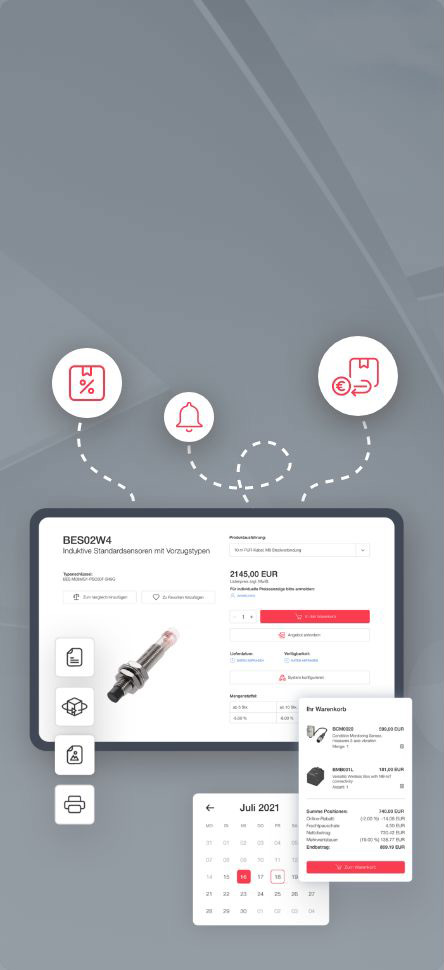What exactly is IO-Link?
Reading Time: minutes
Industrial Automation is a field that is developing extremely rapidly. It is the basis of today's production processes. Every now and then, a new solution appears on the market that significantly revolutionises the solutions used so far. Accelerating, streamlining and minimising production costs in order to achieve maximum profit - these are the primary goals facing every industry.
To achieve them, the industry is focusing on creating consistent control systems and industrial networks - perfect examples are PLCs and industrial communication standards such as Profinet or EtherNet/IP. However, the variety of automation components and the plethora of manufacturers means that it can be cumbersome to communicate digitally with every element of the automation structure such as measurement or actuators.
With this issue in mind the IO-Link communication standard was created. It is the result of the cooperation of many companies, looking for solutions that will allow the use of intelligent devices in a standardised way, supporting modern production processes.
How can IO-Link be used?
IO-Link is an international standard for digital communication (IEC 61131-9) between control devices, sensors and actuators. It eliminates multi-core signal cables and makes it easier to find possible faults. The basic components of the system are:
IO-Link Master- communication gateway between control devices (PLC) and IO-Link Device,
IO-Link Device- executive and measuring devices (sensors)
unshielded 3 or 4-wire cable.
The IO-Link Master is usually mounted directly on the machine or production line near to the sensors and actuators. The IO-Link interface is a standard using point-to-point communication - each IO-Link Device is connected to a separate communication port. The system has been in widespread use for several years, IO-Link facilitates communication, while offering remote parameterisation and diagnostics of the connected devices - a very important issue in the context of implementing solutions that support the goals of Industry 4.0. The term refers to the creation of a factory where, thanks to intelligent production management, processes occur even more efficiently, with reduced time-consuming human intervention.
The connection to each IO-Link device is made via a standard 3 or 4 core cable, the maximum length of which can be as much as 20 meters. An additional advantage is that the cable does not require shielding. Typically, M12 connectors with type A coding are used. The connectors have a protection level of IP65/67. Each IO-Link port can operate in one of four modes:
IO-Link - for IO-Link communication,
DI - digital input,
DO - digital output,
Deactivation - port disabled.
IO-Link master: everything under control
IO-Link devices transmit data at different transfer rates depending on their functionality, e.g. (4.8, 38.4 and 230.4kbaud). Each of the three speeds is supported by the IO-Link master, which automatically adjusts it to the data rate of the device during connection. The IO-Link protocol transmits several different types of data:
process data (maximum 32 bytes of I/O),
value statuses,
device configuration data,
events - alarms, warnings or service data.
Thanks to the cyclic transmission of event and configuration data, the system is not additionally burdened during operation.
The IO-Link master works on the principle of cyclic data exchange with slave devices, which it sends via the master network to the control system. The master works like a slave in such industrial networks as Profibus, Profinet, EtherCat, EthernetIP or CC-Link IE. The use of IO-Link solutions greatly facilitates and speeds up the construction of new machines or entire production lines, as well as the modernisation of existing applications by utilising existing I/O hardware.
Thanks to a broad product portfolio, the right solution is selected to fit the production process, depending on the customer's needs and application requirements.
Author
We have been active on the Polish market for more than 25 years. We serve our customers from Pomerania to the Tatra Mountains, providing first-class service and technical support. We are also present online, where we share our knowledge about the latest implementations, industry trends, events or technical aspects of our solutions.
17 Contributions
Comment
Popular posts
Advantages of inductive proximity sensors in industry
BCM - a sensor that detects anomalies
Optoelectronic sensor
Precision gear system assembly line for the manufacture of residential water meter mechanisms
Contact form
Do you have any questions or suggestions? We are at your disposal.
Balluff Limited
-
20 Cheshire Business Park
Cheshire Avenue
Lostock Gralam
Northwich, CW9 7UA

 Products
Products


